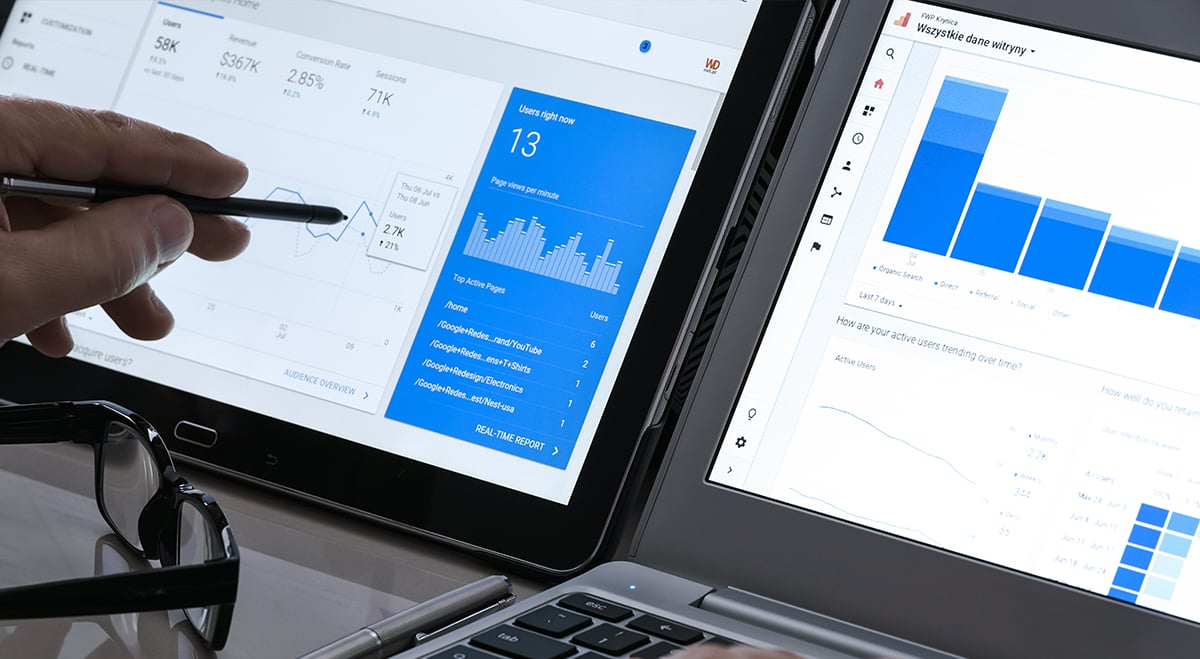As businesses grow and evolve, their digital platforms must keep pace. The move to a new website management system like HubSpot is a significant decision, often filled with questions and considerations. Whether you're drawn to its advanced features, seeking improved user experience, or aiming for seamless integration with other tools, website migration is a strategic move with long-lasting impacts. .
In this blog, we're taking a slightly different approach. Instead of just walking you through the steps of migrating your website to HubSpot, we'll be addressing the specific concerns and queries you might have about the process. By framing our discussion around frequently asked key questions, we aim to provide a clearer, more direct path to understanding the intricacies of a HubSpot migration.
Why should I migrate to HubSpot?
At its core, HubSpot is more than just another content management system - it's a cohesive ecosystem designed to streamline inbound marketing, sales, and customer service efforts.
HubSpot stands out with its array of unique features and tools tailored to enhance user engagement and lead conversion. From intuitive drag-and-drop editors to advanced analytics dashboards, the platform is built to empower businesses to create dynamic, responsive, and data-driven websites. But it's not just about the tools; it's about the philosophy behind them. HubSpot champions the inbound methodology, focusing on attracting, engaging, and delighting customers, which is reflected in every aspect of its platform.

How will migrating to HubSpot affect my website's SEO?
One of the primary concerns during any website migration is the potential impact on search rankings. A misstep in the migration process can lead to drops in rankings, broken links, or lost content - all of which can harm your site's SEO. Thankfully, HubSpot is designed with SEO in mind. The platform offers built-in tools that guide users in optimising pages, from meta descriptions to alt tags, ensuring that the fundamental elements of on-page SEO are addressed.
But it's not just about on-page elements. The structure of your website, particularly when it comes to URLs, plays a crucial role in SEO. As you migrate to HubSpot, it's vital to set up the correct redirects for any changed URLs. HubSpot simplifies this process with its intuitive redirect tools, allowing users to ensure that visitors and search engines find the right pages, even if their addresses have changed.
Beyond the technical aspects, HubSpot also offers insights and recommendations tailored to enhance your site's SEO. Its platform integrates seamlessly with its CRM, enabling a more in-depth understanding of user behaviour and preferences. This data-driven approach allows businesses to craft content that not only ranks well but also resonates with their target audience.

How will the move to HubSpot affect my content and the design of my website?
Transitioning to a new platform isn't just about moving data from one place to another; it's about ensuring that the essence of your brand - the look, feel, and message - translates seamlessly into the new environment. HubSpot, with its distinct architecture and capabilities, requires a thoughtful approach to content and design adaptation.
One of the standout features of HubSpot is its module-based design system. Instead of traditional templates that might limit creativity, HubSpot offers a more flexible, drag-and-drop interface. This means that while your existing website design can often be replicated within HubSpot, it might require a bit of restructuring. Elements that were once static on your old site can now become dynamic, interactive modules, enhancing user engagement and experience.
Content, the lifeblood of any website, also needs careful consideration during migration. While the text, images, and videos can be transferred, how they're presented and organised within HubSpot might differ. It's an opportunity to reassess content hierarchy, streamline navigation, and ensure that every piece of content aligns with the user journey and conversion goals.
Moreover, HubSpot's design framework is built with responsiveness in mind. As mobile browsing continues to dominate user behaviour, ensuring that your site looks and functions optimally across devices is paramount. HubSpot's tools allow for real-time previews and adjustments for different screen sizes, ensuring a consistent experience for all visitors.
In essence, migrating to HubSpot is more than a technical process; it's a chance to refine, enhance, and optimise. By understanding the platform's capabilities and aligning them with your brand's vision, you can craft a digital presence that's not only visually appealing but also functionally robust, setting the stage for continued online success.

How will the move affect my valuable customer data?
Migrating to HubSpot goes beyond just moving website content; it's about ensuring that all your valuable customer data, from contact details to interaction histories, finds its new home in HubSpot's CRM. Instead of juggling multiple platforms for email marketing, lead tracking, and customer management, everything resides under one roof in HubSpot. This centralisation not only streamlines operations but also provides a more holistic view of customer journeys, enabling businesses to craft more targeted and effective strategies.
The process of merging existing data into HubSpot requires meticulous planning. Data integrity is paramount, ensuring that no valuable information is lost or corrupted during the transition. HubSpot provides tools and guidelines to assist in this process, from importing spreadsheets of contacts to integrating with other software solutions your business might be using. As professionals in data migration, Struto offer a unique service for just this, ensuring a guarantee of no loss of data.
But the true magic unfolds once the data is integrated. With every interaction, purchase, or feedback logged in the CRM, businesses gain deeper insights into their audience's preferences, pain points, and potential. This data-driven approach, supported by HubSpot's analytics and reporting tools, allows for the creation of personalised marketing campaigns, automated workflows, and more efficient sales processes.

Can I use custom code and third-party integrations with HubSpot?
One of the strengths of HubSpot is its flexibility when it comes to custom code. For businesses with specific needs that go beyond the standard offerings, HubSpot provides avenues to inject custom HTML, CSS, or JavaScript. This means that unique functionalities, designs, or interactions crafted for your previous site can often be replicated or even enhanced within the HubSpot environment.
Beyond custom code, there are also third-party integrations. In today's interconnected digital ecosystem, many businesses rely on a stack of tech tools, from analytics platforms to e-commerce solutions. HubSpot recognises this and offers a robust API, allowing for seamless integrations with a wide array of third-party applications.
Additionally, for those functionalities that might be unique, extensive or not yet available in HubSpot's marketplace, the platform allows for the creation of custom integration. StrutoCORE is an exemplar of such a solution, offering enterprise-class middleware that expertly connects HubSpot to your business systems and software. With StrutoCORE, your RevOps team can harness the full power of data, ensuring that information is not only centralised but also strategically orchestrated across systems to attract, engage, close, and delight customers in a cohesive and controlled manner. By integrating StrutoCORE into HubSpot, businesses can ensure that the right data is surfaced at the right time and place, enabling seamless experiences that propel the flywheel of growth with reduced friction and enhanced operational efficiency.
Migrating to HubSpot with StrutoCORE integration doesn't mean leaving behind the tools and customisations that have served you so well. Instead, it represents an opportunity to leverage the strengths of both platforms, optimising and elevating your digital presence to new heights of operational excellence and customer satisfaction.

What training and support is available?
For teams unfamiliar with HubSpot, the initial dive into the platform can feel overwhelming. There's the CMS to navigate, the integrated CRM to understand, and a plethora of marketing, sales, and service tools to explore. But this is where HubSpot truly shines. The platform offers a wealth of resources designed to guide users every step of the way. HubSpot Academy, for instance, is a treasure trove of tutorials, courses, and certifications that cover everything from the basics of website management to advanced inbound marketing strategies. Whether you're a content creator, a developer, or a digital marketer, there's content tailored to your specific needs and expertise level.
HubSpot also boasts a vibrant community of users, developers, and experts. These forums and discussion groups provide a platform for users to share experiences, ask questions, and learn from one another. It's a collaborative environment where challenges are addressed, innovative solutions are shared, and the collective knowledge of the community is harnessed.
But training isn't just about mastering the tools; it's about aligning teams and ensuring that everyone is on the same page. As businesses migrate to HubSpot, it's essential to set aside time for team training sessions. These sessions, whether conducted in-house or with the assistance of a HubSpot Partner, ensure that everyone understands the platform's capabilities and how to leverage them effectively for the business' goals.

How should I budget for my website migration to HubSpot?
At first glance, the primary expense might seem to be the cost of the HubSpot platform itself. Depending on the suite of tools and features required, HubSpot offers various pricing tiers, each tailored to different business needs. However, the financial considerations extend beyond just the subscription or licensing fees.
Migrating a website often involves design and development work, especially if there's a need to customise functionalities or adapt existing designs to HubSpot's module-based system. This might necessitate hiring external experts or allocating internal resources, both of which come with associated costs.
Then there are potential expenses related to third-party integrations. While HubSpot offers a vast array of simple native integrations, some extensive or specialised tools or software might require additional investment to ensure seamless compatibility with the platform.
Training, too, can carry a price tag. While HubSpot provides a plethora of free resources, some businesses might opt for specialised training sessions, workshops, or onboarding programs to accelerate their team's proficiency with the platform.
Most importantly, it is essential to frame these costs within the broader context of value. The investment in HubSpot is not just about maintaining a digital presence but enhancing it. The platform's integrated CRM, advanced analytics, and marketing automation capabilities can drive more efficient lead generation, conversion, and customer retention strategies. Over time, these can lead to increased revenue, making the initial investment in migration a catalyst for growth.

How long will the migration to HubSpot take?
Starting with a clear timeline is paramount. While it's tempting to rush the process in the excitement of transitioning to a new platform, a well-paced approach ensures that every aspect of the migration is handled with care and precision. The timeline should factor in everything from initial data backups and content audits to the final stages of testing and going live.
Milestones should be used to serve as checkpoints along this timeline. These are significant stages or achievements in the migration process that help track progress and ensure that the project remains on course. For instance, completing the transfer of all website content might be one milestone, while successfully integrating all third-party tools could be another. By breaking down the migration into these manageable chunks, the entire process becomes more organised and less overwhelming.
One crucial aspect of planning is also accounting for potential challenges. No migration is without its hiccups, whether they're technical glitches, data discrepancies, or unforeseen delays. By anticipating these challenges and having contingency plans in place, businesses can navigate them more effectively, ensuring minimal disruption.
Another vital consideration is minimising website downtime. For many businesses, their website is a critical touchpoint for customers, leads and commerce. Extended periods of inaccessibility can lead to lost opportunities and a tarnished brand image. Safeguarding against website disruption should be discussed with your respective HubSpot partner to ensure they have preventative measures in place.

Conclusion
The digital landscape is not just evolving; it's transforming at a rapid pace. Keeping up means not only adapting to these changes but embracing them to stay ahead. Migrating your website to a platform like HubSpot signifies a pivotal advancement in your digital strategy. This blog has aimed to answer some of the most pressing questions you might have about the migration process to HubSpot, spotlighting its myriad of benefits.
We also understand that even with the best resources at hand, the journey of migration can appear complex and challenging. This is where we, at Struto, step in. Our expertise and experience with HubSpot's platform position us perfectly to aid you in not just overcoming the hurdles of migration but in capitalising on the myriad of opportunities HubSpot offers. Chat to one of our experts to further discuss your migration requirements.
So, if you're considering migrating your website to HubSpot, or have questions about how to maximise your investment in the platform, don’t hesitate to get in touch with us at Struto. We would love to partner with you, bringing our insights and skills to the table, and turning this migration into a pivotal moment of growth for your business.

